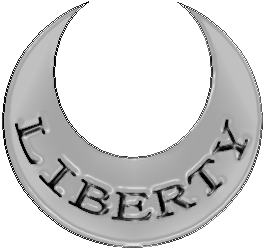by Ron Videau
The soldiers from South Carolina have had a long and illustrious attachment with the shape of the crescent moon from the present day shoulder patch of the state national guard back to the time before the American Revolution and its use as a helmet badge. Many a battlefield on land and at sea around the world has been fought by South Carolina’s sons wearing their beloved crescent moon.
The first known use of the crescent moon as a helmet badge of South Carolina troops was February 1760. It was at this time that the South Carolina Commons House authorized the formation of a new regiment (SC Provincial Regiment-Middleton’s) of ten companies of 100 men each in order to be used against the Cherokee Indian nation in a forthcoming campaign. A surviving draft of this commission within the state archives shows a sketch of Lieutenant Governor Bull’s family seal in which a crescent is prominently displayed. It is believed that this crescent was the model for the insignia of the new regiment. Another item worth noting about this new regiment are the names of two of its officers who would command the regiments light infantry company. These same two men, Capt. William Moultrie and Lt. Francis Marion, would go on to command the 2nd South Carolina regiment during the next war. Also of note is that at the same time that this regiment was formed, another unit composed entirely of “gentlemen of character and very considerable property who propose to go as volunteers with Middleton’s Regiment.” These men wore a uniform of the same style (including crescent) as Middleton’s, but were to be of dark green faced red. Perhaps these same officers carried the use of the crescent as a cap badge into their regiment during the revolution, but that does not explain why so many other units began to take up the crescent as their own. Examples of these units are as follows:
- Light infantry Company, Charlestown Regiment South Carolina Militia1773-1776 Their Crescent had PRO PATRIA inscribed on it.
- Saint Helena Volunteers1775-1780 whose crescent had LIBERTY OR DEATH inscribed on it.
- 1stSouth Carolina Regiment1775-1780 whose crescent also had Liberty or Death inscribed on it, and the officer’s crescent had a pair of silver crossed scimitars within the points of the crescent.
- 2ndSouth Carolina Regimentwith LIBERTY inscribed on the crescent.
- 3rdSouth Carolina Regiment(Rangers) with LIBERTY or DEATH inscribed on their crescents.
- South Carolina State Regiment of Light Dragoons1779-1780 It is believed that some of its members had crescents on their caps.
- South Carolina Light Dragoons1781-1782 This unit is also believed to have had some of its members wearing crescents on their caps.
Another note worth mentioning is the fact that many units from South Carolina used a light infantry cap/helmet as part of their uniforms but did notat anytime wear a crescent on their helmets. One such unit was the 4thSouth Carolina. As can be seen, many, but not all of South Carolina’s troops wore crescents on their caps.
While it has been noted when the crescent first began to be used and that its use was careered into the Revolution, it does not explain why. Why did they do it? To answer this, we can look to romantic legend rather that documented fact. During the eighteenth century it was common practice in England for the firstborn son to inherit everything of his father’s estate (i.e. the sun) while the second born son inherited nothing (i.e. the moon). Many of the men who came to South Carolina seeking their fortunes were these second sons. Many of these men did indeed make their fortunes in South Carolina as plantation owners growing rice and indigo, or as merchants or shipping magnates. Yes, they came to South Carolina as Second Sons with only the moon as their inheritance and with pride in making their own way in the world; they took the moon as their own symbol. In time the crescent moon would find its way from the troop’s helmets onto the color which flew over Fort Moultrie when it was defended by the men of the IInd SC Regt. who defeated a large British fleet on June 28th1776. Today the dark blue flag with its white crescent can still be seen flying over the great state of South Carolina.
Whatever the reason, whatever twists of fate led the crescent moon to become South Carolina’s very own symbol matters little. It is a symbol that to this day is still worn on the shoulder patches of the men and women of the South Carolina National Guard serving both at home as well as on foreign fields. So when you see a solider wearing the crescent moon of South Carolina on his uniform know that you are standing before a solider and proud defender of history, his state, and his country.
McMaster Fitzhugh Soldiers and uniforms: South Carolina Military Affairs, 1670-1775
University of South Carolina Press, Columbia, SC 1971
Katcher Philip Uniforms of the Continental Army
George Shumway publisher York, PA 1981
The First and Second South Carolina Regiments 175-1780 Plates No’s. 449-450
The Company of Military Historians
Charleston Battalion of Artillery 1778-1789 Plate No. 461
The Company of Military Historians
South Carolina Regiment of Militia Light Horse, 1781-1782 Plate No. 473
The Company of Military Historians
Fourth South Carolina Regiment (Artillery), 1775-1780 Plate No. 485
The Company of Military Historians
South Carolina Navy 1776-1780, Plate No. 489
The Company of Military Historians
The Third South Carolina Regiment (Rangers) 1775-1780 Plate No. 494
The Company of Military Historians
South Carolina Provincial Regiment (Middleton’s), 1760-1761 Plate No. 561
The Company of Military Historians
South Carolina Light Dragoons, 1781-1782 plate No. 558
The Company of Military Historians
South Carolina State Regiment of Light Dragoons, 1779-1780 Plate No. 593
The Company of Military Historians
Light Infantry Company, Charlestown Regiment South Carolina Militia, 1773-1776
Plate No. 611 The Company of Military Historians
